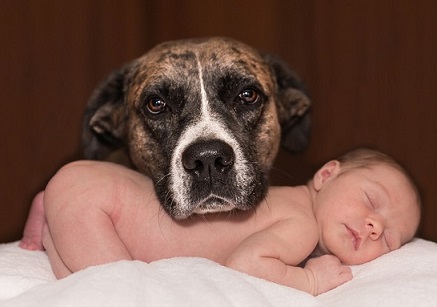
Owning a cat or dog might be a good thing when it comes to reducing the risk of childhood allergies and obesity, according to new findings from the Canadian Healthy Infant Longitudinal Development (CHILD) Study.
The research, published in the journal Microbiome and highlighted in Nature Outlook, found that babies exposed to furry pets in early life had higher levels of two bacteria that may protect against allergic disease and childhood obesity.
“The abundance of these microbes, which help to train a baby’s developing immune system, was increased two-fold in babies living with pets in the household,” says the study’s senior author, Dr. Anita Kozyrskyj, an AllerGen investigator and a professor in the Department of Pediatrics at the University of Alberta.
